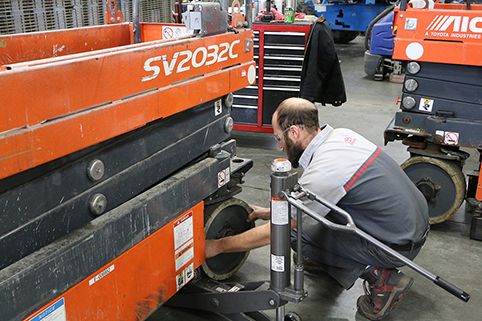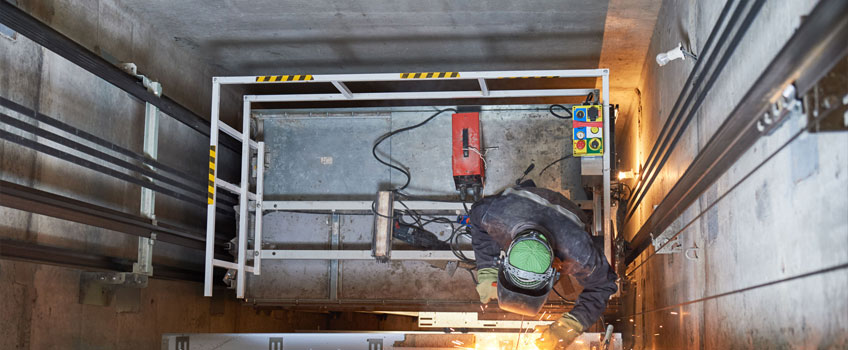Advanced Lift Engineer Course: Prepare for Jobs with Leading Lift Repair Companies Near Me
Advanced Lift Engineer Course: Prepare for Jobs with Leading Lift Repair Companies Near Me
Blog Article
Comprehensive Guide to Elevator Solutions and Their Upkeep
Browsing the elaborate world of elevator systems and their upkeep is a task that demands accuracy and understanding. From the different kinds of elevator systems in operation to the precise adherence to security policies, the upkeep of these upright transportation gadgets is a complex endeavor. As structures soar greater and modern technology developments, the demand for a comprehensive understanding of lift systems ends up being significantly critical. Join us as we untangle the intricacies of elevator maintenance, discovering common issues, finest techniques, and innovative modern technologies that shape the modern landscape of vertical transportation.
Kinds of Lift Equipments
Elevator systems been available in numerous kinds, each created to match particular structure demands and individual needs. One of the most common kinds consist of hydraulic lifts, grip elevators, machine-room-less lifts, and vacuum cleaner elevators. Hydraulic elevators are excellent for low-rise buildings and use a hydraulic piston to relocate the lift car. Traction lifts, on the other hand, are a lot more suited for skyscraper buildings and use steel ropes and counterweights to relocate the cars and truck. Machine-room-less lifts are a space-saving option as they do not need a separate device space for the lift machinery. Vacuum lifts, a much more contemporary innovation, usage air stress differentials to relocate the vehicle within a clear tube.
Each kind of lift system has its very own advantages and negative aspects, making it important for building owners and programmers to very carefully consider their particular requirements prior to selecting one of the most ideal choice. Factors such as developing elevation, room availability, energy efficiency, and budget restrictions all play a considerable role in determining the most effective lift system for a certain building.
Usual Upkeep Concerns
Routine upkeep of elevator systems is vital to guarantee smooth procedure and prolong their life-span. In spite of normal maintenance, elevator systems can still experience common maintenance concerns that need to be promptly dealt with to prevent interruptions in solution. Normal inspections and aggressive maintenance can help identify and resolve these common upkeep problems before they intensify and affect the total efficiency of the lift system.
Safety And Security Rules and Conformity
Adhering to rigid safety and security regulations and making sure conformity with market criteria are paramount for maintaining the functional honesty of elevator systems. Lifts undergo a comprehensive set of security guidelines to protect travelers, upkeep personnel, and the public. Regulatory bodies such as the Occupational Security and Health And Wellness Management (OSHA) in the USA and the European Lift Association (ELA) in Europe establish guidelines that cover various elements of elevator design, installment, operation, and maintenance.
Compliance with these policies is not only a legal need however additionally a moral responsibility for structure proprietors and lift maintenance companies. Regular examinations, maintenance checks, and adherence to security protocols described in the policies are essential to make sure the reliable and safe procedure of lift systems.
Finest Practices for Upkeep

Building owners must also think about investing in modernization upgrades to improve the effectiveness and safety of their lift systems. By following these ideal methods, lift systems can run efficiently and securely, giving trusted upright transport for occupants.

Advanced Technologies for Performance
Applying innovative innovations in lift systems can significantly improve functional performance and passenger experience. lift engineer course. One of the key advancements in elevator modern technology is the introduction of location control systems. These systems allow guests to input their wanted floor prior to getting in the lift, which then guides them to one of the most efficient cars and truck. By minimizing unnecessary stops and optimizing travel courses, destination control systems reduce wait times and blockage in high-traffic structures.
Additionally, the combination of smart sensors and anticipating upkeep capacities has reinvented lift maintenance. These sensing units can detect prospective issues before they intensify, allowing aggressive upkeep interventions and reducing downtime. Additionally, the usage of energy-efficient elements and regenerative blog here drives helps in reducing power consumption and operating expense in elevator systems.
Moreover, the execution of cloud-based monitoring and remote diagnostics permits real-time monitoring of elevator performance and instant troubleshooting of any type of malfunctions. This positive method not only improves system reliability however also enhances the general check these guys out user experience by ensuring smooth and uninterrupted elevator operations.
Verdict
In final thought, recognizing the different sorts of elevator systems, typical upkeep problems, security policies, best maintenance practices, and advanced modern technologies for effectiveness is important for guaranteeing the smooth procedure of elevators. By sticking to security guidelines and applying finest techniques for maintenance, structure owners can extend the life-span of their lift systems and guarantee the security of guests. It is necessary to stay upgraded on the newest improvements in elevator technology to enhance performance and dependability.
The most common kinds include hydraulic elevators, grip elevators, machine-room-less elevators, and vacuum elevators. Hydraulic elevators are excellent for low-rise buildings and use a hydraulic piston to move the elevator vehicle. Machine-room-less elevators are a space-saving alternative as they do not need a separate maker space for the lift machinery. Routine examinations and positive upkeep can assist recognize and resolve these typical maintenance concerns before they escalate and influence the total performance of the lift system.

Report this page